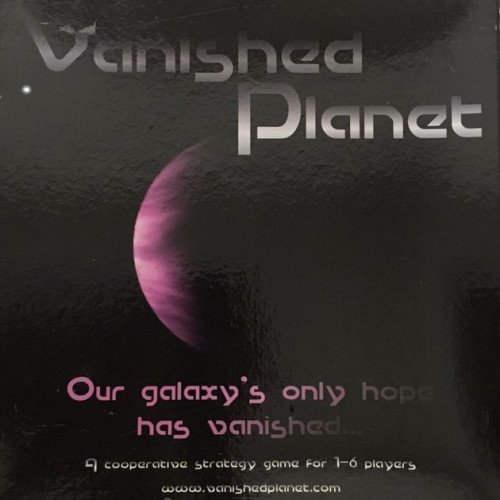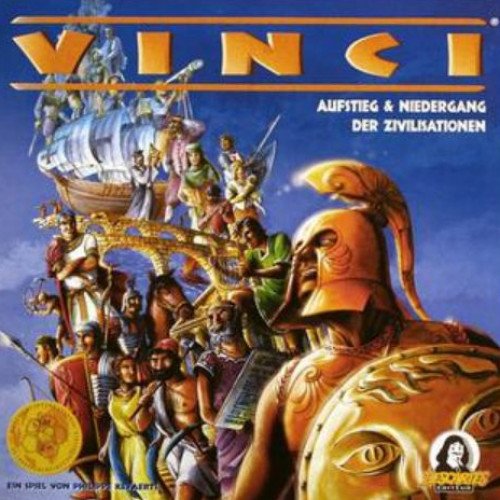"VANISHED PLANET" vs "VINCI"

VANISHED PLANET
Vanished Planet is a cooperative board game that debuted at the World Boardgaming Championships in 2003. Vanished Planet pits the players against a time limit; the players must succeed in a certain number of goals before this time limit is reached, or they all lose. In the game scenario, Earth has been replaced by a dark mass (the creature) that is growing outward toward the six planets of the remaining galactic species. Cryptic transmissions from Earth can be obtained from satellites or from communication relays that players can construct during the course of the game; these transmissions are goals that specify actions to take, such as discarding equipment or people, or visiting certain places on the board. Through game play, players can build new spaceships, upgrade their spaceships, or build mines that slow the process of the creature. They do this by visiting places on the board that can be tagged to produce various resources that can be used to hire personnel and build technology and equipment. Each turn, a random event drawn from a deck of event cards can either benefit or hinder the player whose turn it is. Creature growth cards can be added to the event deck to alter the difficulty of the game. In 2005, the Racial Advantage Expansion was added to the game. This expansion introduces a new race and adds two special abilities to each race. Depending on the special ability chosen, the players may need to complete more goals in order to win the game. Vanished Planet was named by Games magazine as "best family game" in 2005
Statistics for this Xoptio

VINCI
Vinci is a board game designed by Philippe Keyaerts. It resembles a diceless variant of Risk with variable special abilities and an original decline mechanic, and is also similar in some ways to History of the World. The game's name means "to be conquered" in Latin. In 2009, the game's mechanics were re-implemented with several changes and a fantasy-oriented theme as Small World, also credited to Keyaerts, and published by Days of Wonder. Each player begins the game by selecting one of several available civilizations. Each civilization is defined by two tokens, each offering a special ability or special scoring opportunity. Each token also provides the civilization with a number of playing "pawns", to which an extra number is added based on the number of players in the game. The player then makes use of these pawns to capture territory. This is done in a diceless manner: to capture a territory, a player must place a particular number of pawns in it, based on the location of the territory, the number of defending pawns, and any special abilities of the player's civilization. If the player can place a sufficient number of pawns, the capture is guaranteed to succeed; if they cannot, the move is illegal. If enemy pawns are defeated in a captured territory, one of them is removed from the game entirely and the remainder are returned to the owning player to replace in their own territories. At the end of each turn, a player scores points based on the number of territories they own, with some civilization abilities providing bonuses. Since the number of pawns in a civilization is (usually) fixed, and can only go down as other civilizations capture territories, eventually a civilization will reach a maximum number of territories that it can support. At the beginning of any turn, the player owning that civilization can declare that it is going into decline. This allows the player to select a new civilization and bring that onto the board while the pawns of the former civilization remain in place, no longer movable but continuing to gather points until their territories are captured. The game continues until a certain number of points is reached, whereupon the player with the highest score wins.